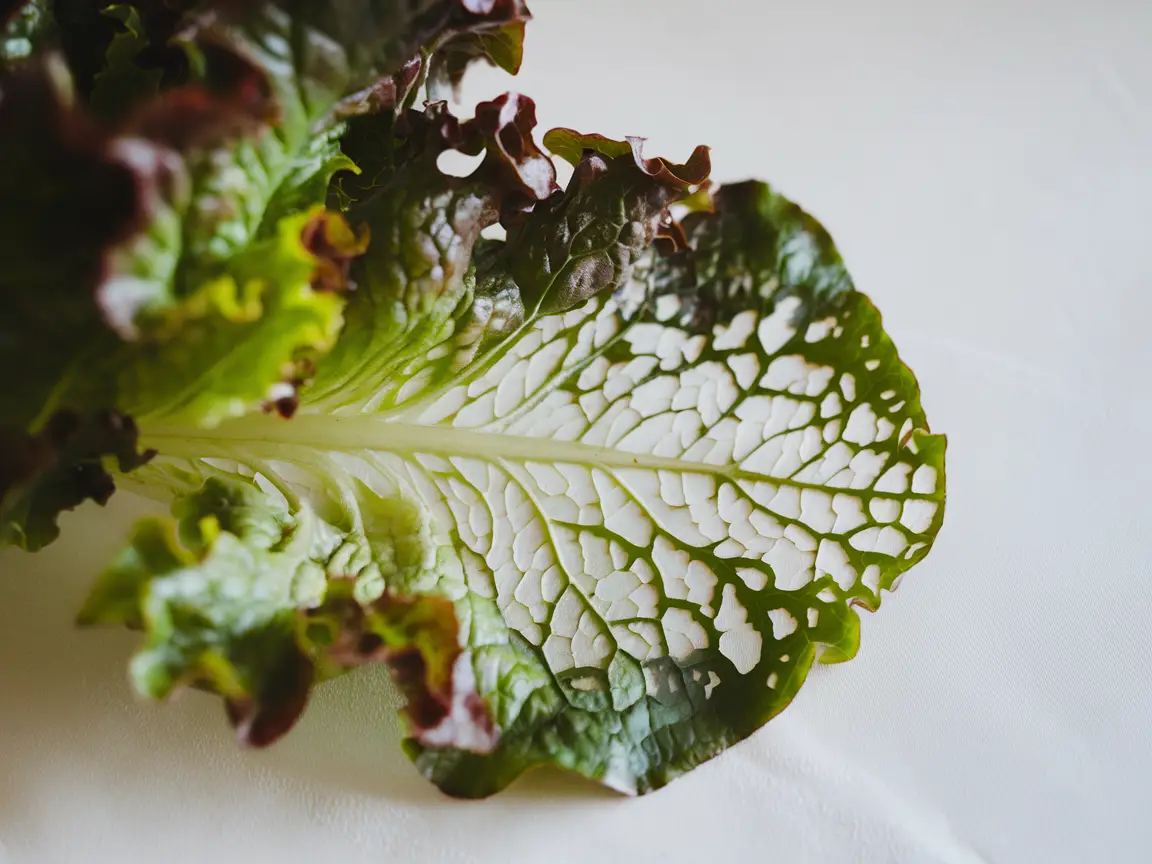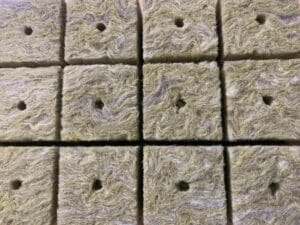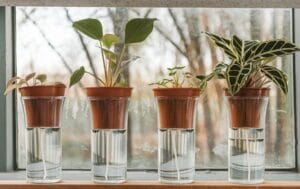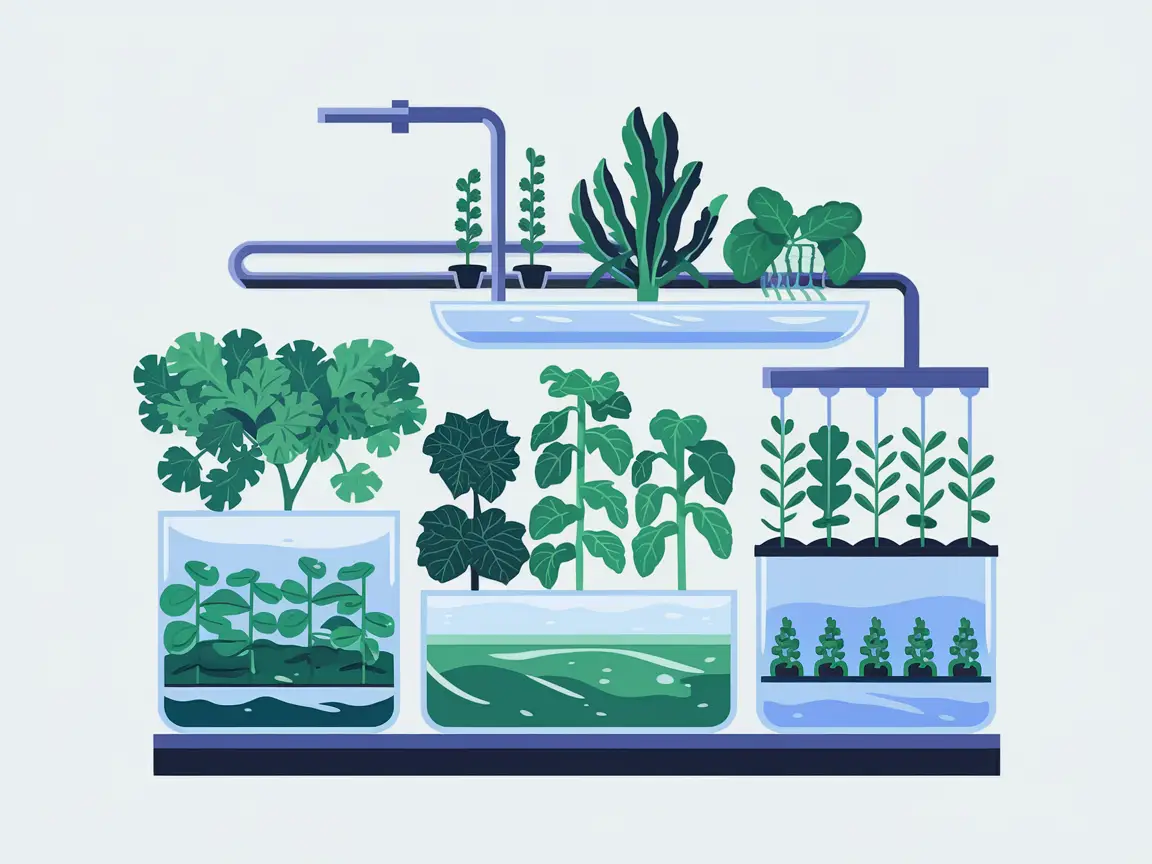Hydroponic lettuce is a favorite among growers for its fast growth and consistent quality. However, translucent leaves can be a common and frustrating problem. These spots or patches on leaves are more than a cosmetic issue—they can signal underlying problems in your hydroponic setup. In this guide, we’ll explore the causes, diagnosis, and solutions for translucent leaves in hydroponic lettuce, ensuring your crop stays healthy and productive.
What Are Translucent Leaves in Hydroponic Lettuce?
Translucent leaves refer to sections of lettuce leaves that lose their vibrant green color and appear see-through or watery. These spots often develop due to stress or damage at the cellular level. If left unchecked, they can lead to stunted growth, disease susceptibility, or reduced crop yield.
Common Causes of Translucent Leaves
1. Environmental Stress
Environmental factors play a significant role in lettuce health, especially in hydroponic systems:
- Temperature Fluctuations: Lettuce thrives in a stable environment. Sudden drops or spikes in temperature can disrupt plant processes, leading to stress-related symptoms like translucent spots.
- Humidity and Airflow: High humidity combined with poor air circulation can hinder transpiration. This prevents plants from absorbing calcium efficiently, a critical nutrient for healthy leaf development.[1]
2. Nutritional Imbalances
Nutrient deficiencies or imbalances are a primary cause of translucent leaves:
- Calcium Deficiency: Often seen as translucent or brown-edged spots on younger leaves, calcium deficiency is a common issue in hydroponic lettuce disease. It occurs when plants cannot take up enough calcium, even if it’s present in the nutrient solution.[2]
- EC and pH Levels: Incorrect Electrical Conductivity (EC) or pH can block nutrient absorption. Lettuce grows best with an EC of 1.2–1.8 mS/cm and a pH of 5.5–6.5.
3. Pathogens and Pests
- Bacterial Leaf Spot: Pathogens like Xanthomonas and Pseudomonas can infect lettuce, causing spots that appear translucent at first and later turn necrotic.
- Pests: Aphids and thrips feed on plant sap, leaving behind small translucent areas on the leaves.[3]
4. Mechanical Damage
Physical factors like rough handling, strong airflow, or water droplets on leaves can damage leaf cells, creating localized translucent spots.
Diagnosing the Problem
When translucent leaves appear, diagnosing the root cause is essential to prevent further damage and ensure your hydroponic lettuce thrives. Here’s a detailed, step-by-step guide for troubleshooting:
1. Test the Nutrient Solution
- How to Check pH Levels:
- Use a digital pH meter or pH test strips designed for hydroponic systems.
- Take a sample of the nutrient solution from the reservoir.
- Measure the pH by dipping the test probe or strip into the solution.
- Compare the results against the optimal pH range for lettuce: 5.5–6.5.
- Adjusting pH:
- If pH is too low (acidic), add a pH-up solution (potassium hydroxide or similar).
- If pH is too high (alkaline), use a pH-down solution (phosphoric acid or citric acid).
- If pH is too low (acidic), add a pH-up solution (potassium hydroxide or similar).
- Re-test the solution to confirm the adjustment.
- Use a digital pH meter or pH test strips designed for hydroponic systems.
- How to Check EC Levels:
- Use a digital EC (Electrical Conductivity) meter.
- Rinse the probe with distilled water to ensure accuracy.
- Dip the probe into the nutrient solution and wait for a stable reading.
- Compare the reading to the recommended EC range for hydroponic lettuce: 1.2–1.8 mS/cm.
- Adjusting EC:
- If EC is too high, dilute the nutrient solution with clean water.
- If EC is too low, add more nutrients as per your system’s guidelines.
- If EC is too high, dilute the nutrient solution with clean water.
- Re-test to confirm the adjustment.
- Use a digital EC (Electrical Conductivity) meter.
2. Inspect Roots
- Step-by-Step Root Check:
- Gently lift a plant from the grow bed or net pot. Be careful not to damage the roots.
- Observe the root system:
- Healthy roots: White or cream-colored, firm, and tangle-free.
- Unhealthy roots: Brown, black, or slimy with a foul odor (signs of root rot caused by Pythium or other pathogens).
- Healthy roots: White or cream-colored, firm, and tangle-free.
- Feel the roots for texture:
- Mushy roots often indicate overwatering or inadequate oxygen levels in the root zone.
- Mushy roots often indicate overwatering or inadequate oxygen levels in the root zone.
- Smell the roots:
- A musty or sour smell suggests bacterial or fungal infection.
- A musty or sour smell suggests bacterial or fungal infection.
- Gently lift a plant from the grow bed or net pot. Be careful not to damage the roots.
- Actions to Take:
- If root rot is present:
- Remove affected plants and trim off damaged roots with sterilized scissors.
- Sterilize the hydroponic system using hydrogen peroxide (3–5% diluted) or another safe disinfectant.
- Ensure adequate oxygen supply by checking air pumps or stones in the reservoir.
- Remove affected plants and trim off damaged roots with sterilized scissors.
- If root rot is present:
3. Check for Pests or Pathogens
- Visual Examination:
- Carefully inspect both the top and underside of the leaves for pests like aphids, thrips, or spider mites.
- Signs of pest damage: Tiny translucent spots, stippling, or discoloration.
- Signs of pest damage: Tiny translucent spots, stippling, or discoloration.
- Look for signs of bacterial or fungal infections:
- Yellow halos, slimy spots, or moldy patches on leaves.
- Check stems and leaf veins for discoloration or lesions.
- Yellow halos, slimy spots, or moldy patches on leaves.
- Carefully inspect both the top and underside of the leaves for pests like aphids, thrips, or spider mites.
- Use a Magnifying Glass:
- A handheld magnifying glass or smartphone camera can help you spot small insects or fungal spores.
- A handheld magnifying glass or smartphone camera can help you spot small insects or fungal spores.
- Actions to Take:
- For pests:
- Apply neem oil, insecticidal soap, or other organic pest control methods.
- Consider introducing beneficial insects like ladybugs if infestation is severe.
- Apply neem oil, insecticidal soap, or other organic pest control methods.
- For bacterial/fungal infections:
- Remove and discard infected leaves immediately.
- Apply a copper-based fungicide or bactericide as a treatment.
- Remove and discard infected leaves immediately.
- For pests:
4. Monitor Environmental Conditions
- Using Sensors:
- Temperature:
- Use a thermometer or a digital environmental monitor.
- Ensure temperatures stay within the optimal range for lettuce: 16–24°C (60–75°F).
- Use a thermometer or a digital environmental monitor.
- Humidity:
- Use a hygrometer or digital monitor to track relative humidity.
- Aim for 50–70%. Adjust with humidifiers or dehumidifiers as needed.
- Use a hygrometer or digital monitor to track relative humidity.
- Airflow:
- Test for airflow using a handheld anemometer or simply observe the movement of lightweight objects (e.g., a small ribbon tied near the plants).
- Ensure fans are providing gentle but consistent airflow to reduce humidity and promote transpiration.
- Test for airflow using a handheld anemometer or simply observe the movement of lightweight objects (e.g., a small ribbon tied near the plants).
- Temperature:
- Actions to Take:
- If temperatures are too high, use fans or cooling systems to bring them down.
- If humidity is too low, add a humidifier or mist plants lightly with clean water (avoiding water pooling on leaves).
- If airflow is insufficient, adjust fan placement or add more fans for better circulation.
- If temperatures are too high, use fans or cooling systems to bring them down.
Summary: Solutions to Prevent and Treat Translucent Leaves
1. Improve Environmental Conditions
- Maintain stable temperatures between 16–24°C (60–75°F).
- Keep humidity at 50–70% and ensure proper airflow around the plants to reduce moisture buildup on leaves.
2. Optimize Nutrient Levels
- Include calcium in your nutrient solution and ensure it’s accessible by maintaining proper pH and EC levels.
- Avoid over-fertilizing with nitrogen, which can promote rapid growth that outpaces nutrient uptake.
3. Address Diseases and Pests
- Remove infected leaves to prevent the spread of bacterial or fungal pathogens.
- Treat pest infestations with organic solutions like neem oil or insecticidal soap.
4. Regular Maintenance Practices
- Clean and sterilize your hydroponic system between cycles to prevent recurring problems.
- Monitor plants daily for early signs of stress or disease.
Why Healthy Leaves Are Key in Hydroponic Lettuce Cultivation
Healthy leaves are essential for photosynthesis, growth, and overall yield. Addressing translucent leaves promptly ensures a robust harvest while preventing long-term issues like stunted growth or disease outbreaks. With careful monitoring and proactive management, your hydroponic lettuce can thrive.
Conclusion
Translucent leaves in hydroponic lettuce may seem daunting, but they’re manageable with the right approach. By understanding the causes—whether environmental, nutritional, or biological—you can take targeted action to protect your crop. Remember to monitor your setup regularly and make adjustments as needed. Share your experiences or questions about translucent leaves and lettuce diseases in the comments below—we’d love to hear from you!









